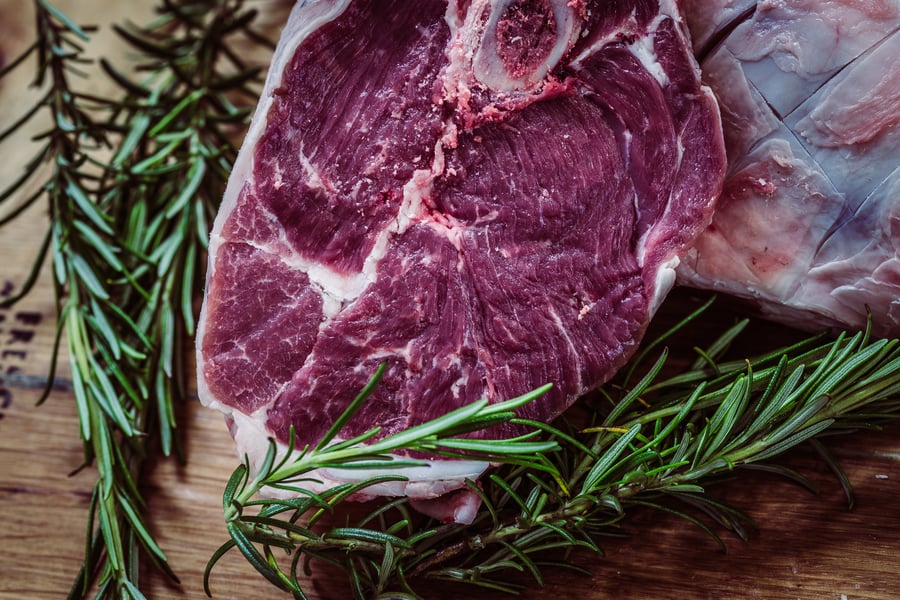Consistent Refrigerated Temperatures Required for These 10 Foods

Navigating the world of proper food refrigeration can sometimes be confusing. Here at RDT, we want to simplify it for you. We've previously detailed how you should properly store ice cream, and now we'd like to discuss ten foods that require consistent temperatures in refrigerators.
The following foods are only a few of many that need consistent temperatures in refrigerators or freezers to prevent the build-up of harmful microorganisms that cause food-borne illness:- Raw meat
- Poultry
- Seafood including shellfish
- Milk and dairy products
- Deli products
- Frozen prepared foods
- Open jars of mayonnaise and/or other condiments
- Packaged bacon and hot dogs
- Baked fruit pies
- Cut fruits and vegetables
Fruits and Vegetables
There are some questions about refrigerating fruits and vegetables. Cut fruits and berries, tomatoes, sliced cucumbers, lettuce, carrots, celery, cabbage, and other similar fresh vegetables will last longer when refrigerated. Most commercial establishments will keep vegetables in a refrigerator at a constant temperature to prolong their life for an extra day. Many vegetables are kept in a special cooler section in commercial kitchen refrigerators. This is similar to the vegetable section in home refrigerators.
Tomatoes do not have to be refrigerated if they are used immediately. Lettuce will wilt and turn brown if it is kept for too long without refrigeration.
Broccoli, eggplant, zucchini, and other foods that are cooked immediately, do not need refrigeration unless they are purchased in a frozen package. Many fruit pies and quiches should be refrigerated after they are cut if the entire pie is not used.
Meat, Fish, and Poultry
A refrigerator set between 34 to 40 degrees Fahrenheit will keep raw poultry, meat, and seafood, (including shellfish) fresh for two days. Some steaks and chops may stay fresh for up to three days.
Packaged foods such as hot dogs and bacon can stay fresh for up to seven days, although they should be cooked and served prior to that time. Hard sausage such as pepperoni can last up to seven days. Check the recommendations on packaged meat products once they are opened. Unopened packages of lunch meat can keep in the refrigerator for up to a week. The contents should be used within three days once the package is opened.
Dairy, Deli Products, and Eggs
Milk, most cheeses, yogurt, sour cream, whipping cream, cottage cheese, and other cheese products, must be kept in the refrigerator and used as soon as possible by restaurants and other food services. Butter should be refrigerated, although it can be removed for an hour before serving to soften. This also applies to the individual foil-wrapped pats of butter.
Raw eggs in their shells can keep in a refrigerator for up to three weeks. Processed egg products such as egg whites should be consumed within the time limit indicated on the packaging.
Deli foods such as potato salad, coleslaw, and other specialty salads, must be refrigerated. These products are usually made with eggs and mayonnaise along with cheeses and deli meats. Salad dressings made with mayonnaise and/or cheese should also be refrigerated.
Opened Jars and Canisters
Open jars of mayonnaise, jams, peanut butter without preservatives, olives, pickles, and other condiments should be refrigerated. This includes ketchup, and even mustard and relish. These condiments available in small sealed packets do not have to be refrigerated. But the high acid content of these products is not enough to prevent harmful bacteria after they are opened if they are left out at room temperature, especially in a warm climate.
Canisters, jars, and bottles of opened food products must be sealed tightly when returned to the refrigerator. Plastic bags can also be used to store food, if the bags are airtight.
Frozen Foods
The ideal temperature for frozen food is 0 degrees Fahrenheit. To quickly freeze food, -10F is recommended. Zero degrees on commercial freezers will keep frozen packaged food fresh for days.
Freezing does not keep microorganisms and harmful pathogens from multiplying once the package is thawed. Food taken from the freezer to thaw should be used as soon as the items are soft. Some frozen items can be cooked immediately. This includes frozen toaster waffles, casseroles, and other prepared dishes. Many frozen items can be thawed and cooked in a microwave.
Reliable Temperatures Start With Reliable Refrigeration
Commercial kitchens, as well as residential kitchens, need reliable refrigerators and freezers that protect foods from harmful microorganisms. All restaurants want guests to return happy and healthy. Institutional commercial kitchens in schools and health care facilities, among other organizations, must maintain the highest quality in cold food storage and handling.
Ensure your commercial refrigeration systems are consistently operating at peak performance by following our Refrigeration Maintenance Checklist.




